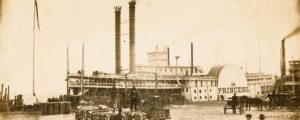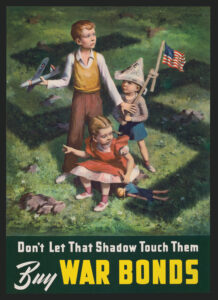Coming Home to Roost
About this time of year in 1918, America was mobilizing its men and resources in what the country saw as its duty to put an end to the war “over there” that had ravaged much of Europe for the past four years. The nation was flexing its muscle on the international stage and reaching for the world-dominant status that it holds today. But before this military and political history would play out, America — along with the rest of world — caught the flu. In a global pandemic of biblical proportions, the numbers were staggering. It is estimated that worldwide, 50 to 100 million people perished from influenza in 1918-19. By the time it was over in the United States, in the course of mere months, millions had become sick, with an estimated 675,000 dead out of a total population of about 105 million. Hundreds of thousands of young men crowded in military encampments, and their frequent movements from base to base before shipping out overseas harbored and hastened the spread of the outbreak. Coupled with the ignorance of how to effectively limit the outbreaks and treat the afflicted, the population was left virtually defenseless. Furthermore, as this month’s cover story describes, with the government’s intense focus on fanning patriotic fervor for war and raising funds for the fight, the epidemic’s catastrophic potential was downplayed and precautions that could have reduced the outbreaks were ignored.
Nearly 90 years later, with the specter of an emerging killer flu making headlines, international and national resources are being marshaled to monitor human cases of H5N1 avian influenza and the threat of a pandemic. Remembering 1918 and recognizing the catastrophe that could unfold in an age when a virus can cross the globe in a matter of hours has spurred unprecedented international cooperation and planning. Scientists have made huge strides in understanding influenza and, indeed, may be on the verge of creating a vaccine for the most virulent strain and introducing medications that can effectively reduce the severity of an influenza attack. But in spite of amazing scientific progress, the prospect of a pandemic a fraction of the scale of 1918 actually unfolding is cause for utmost alarm. Government predictions in the event of a severe flu epidemic on a scale similar to 1918 estimate 90 million Americans becoming ill, nearly 10 million being hospitalized and 1.9 million dying. Much as in 1918, American resources are being strained by war abroad. The global war on terror and ongoing occupation and conflict in Iraq and Afghanistan require hundreds of thousands of military personnel and billions of dollars each month. However, unlike 1918, awareness and preparation at all levels of government is high and access to detailed information about influenza, how its spread can be minimized and how individuals can prepare for an outbreak, is readily available. Nevertheless, as the flaws in the federal government’s response to Hurricane Katrina’s devastation of New Orleans and the Gulf Coast revealed, citizens need to be prepared to take personal responsibility for themselves in the aftermath of any disaster.




